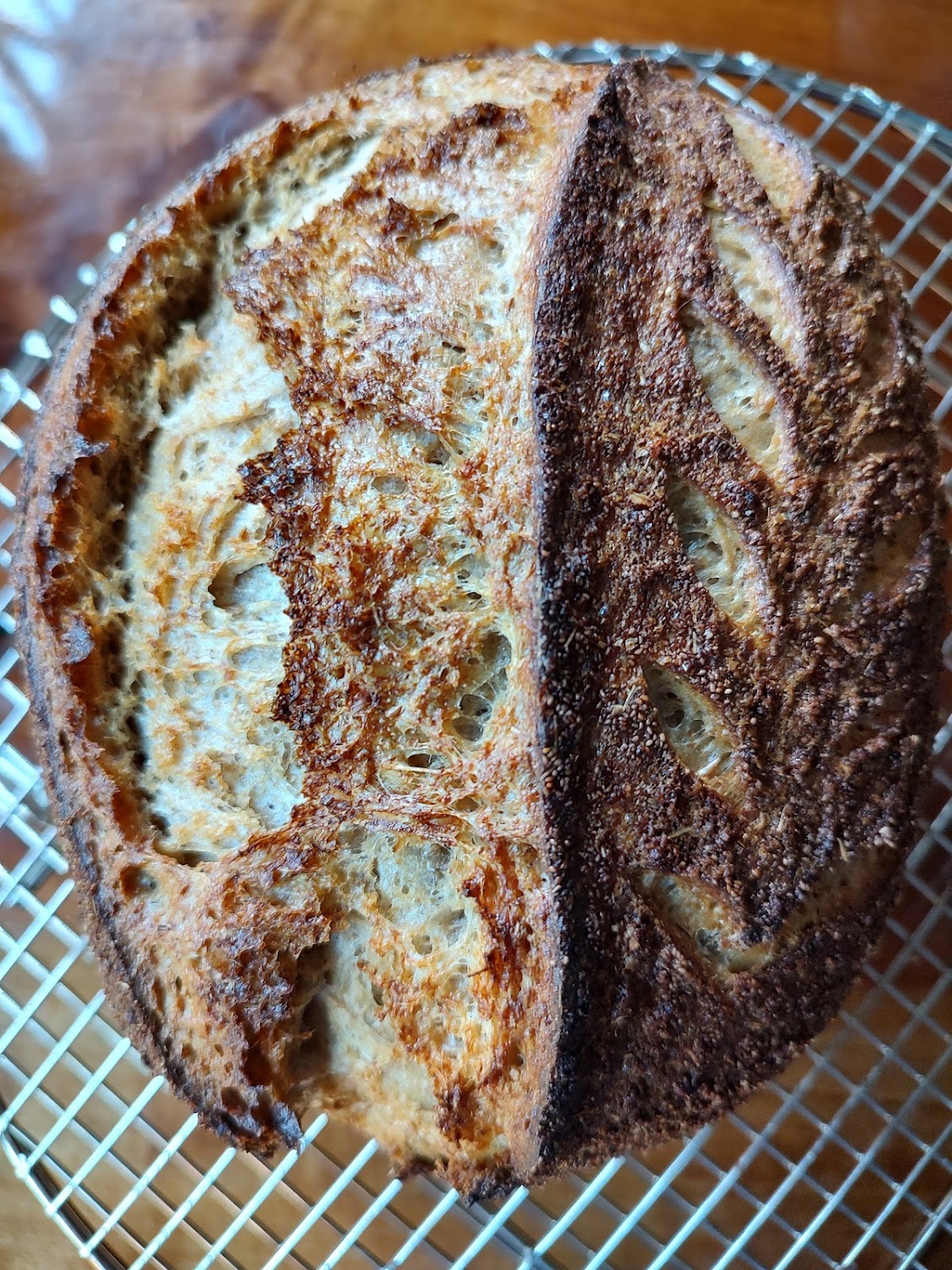92nd bake. 06/11/2022. Liezl Jayne's Oats & Seeds. 4th.
June 11, 2022. 92nd blogged bake.
This is Liezl Jayne's gluten-free Oats, Nuts, and Seeds bread. It's also in the "Josey Baker Bread" book, with slightly different proportions, under the name Adventure Bread.
Recipe:
https://liezljayne.com/overnight-oat-nut-seed-bread-gluten-free/
I made a half batch for a mini loaf pan.





